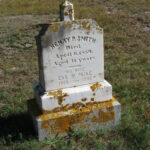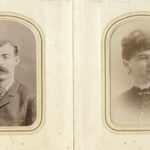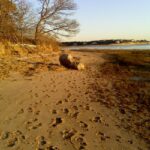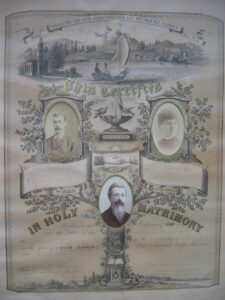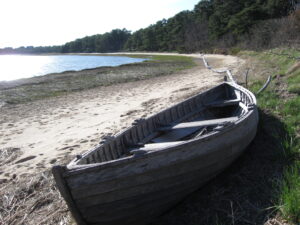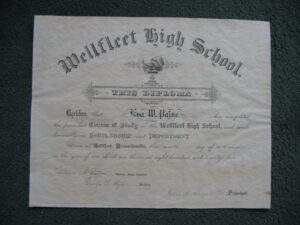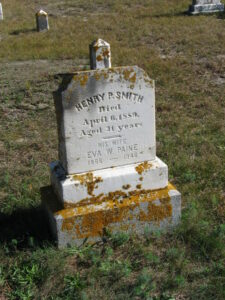
South Wellfleet: Paine Hollow is easy enough to find, it’s a left turn off Route Six as you drive towards Provincetown. If you do turn down the road, drive slowly, and imagine it as it was over one hundred years ago- Greek Gothic-style farmhouses lining the road, and most of them owned by members of the then expanding Paine family. The road dead-ends at the water of Loagy Bay and Blackfish Creek, where schooners were once moored. The following are some pages that were cut from the original preface of Eva and Henry, A Cape Cod Marriage, which was deemed “too long” by half of my volunteer readers. Here, the description of Paine Hollow as experienced by the main character, Eva Paine Smith:
“The neighborhood of Paine Hollow was self-sufficient and prosperous. Tidy whitewashed farmhouses and their companion barnyards spread like a quilt across the valley and down to the shore of the bay. As a little girl, I believed that everyone had as many cousins, aunties and uncles living close by. The feeling between neighbors was such that we would call a man “Uncle” out of respect, even if he wasn’t, and I was in my twenties before I unraveled the family tree enough to understand who my true aunts were and who had been bestowed the title through close friendship with the Paine family.
In 1792, my great-grandfather had come to South Wellfleet from the nearby town of Truro. Thomas Paine was attracted by Elizabeth Young, a grieving miss who had inherited a farmstead from her parents. It is said that Elizabeth was a beautiful bride, and her property was twice as attractive. Her house sat on a rise near the county road from which the terrain gently sloped a mile west down to the shore. Low hills bounded the bottom land on the north and south. The shoreline of the farmstead fronted on Blackfish Creek Harbor, which let out into the larger Wellfleet Harbor and thus provided convenient access to the main transportation lanes of the day—the watery realm of wind, tide and sail.
Thomas farmed the land and sailed his excess produce to market. He managed to scrape a living from his meadows—enough of a living to feed the many children birthed by the hardy Elizabeth. As their offspring came of age, Thomas generously sectioned the farm and gave a homestead parcel to each of his five sons and one daughter who survived to adulthood. Elizabeth loved her children and did not want them to settle far from her. She was rewarded by the great flock of grandchildren that lived within walking distance of her front door, my father being one of them—the seventh child of Elizabeth’s oldest son, Nathan.
A public road was laid out between the new homesteads and down to the shore, and a few parcels were sold to other families who recognized the allure of the location. It wasn’t long before the land alone could not sustain the growing number of hungry mouths living upon it. As always, the ocean provided. Navigation was taught as a winter subject in the local schoolhouse, and Thomas’s sons and grandsons called themselves seamen, not farmers, and sailed out upon the water.”
And so, Thomas Paine from Truro, MA (a son of the Thomas Paine who built the windmill now in Eastham) was the first Paine in the hollow. Thomas and Elizabeth’s sons all prospered and hired Zoeth Sparrow and Eldad Hopkins to build beautiful Greek-Gothic-styled farmhouses for their own families. The builders had a fine sense of balance and detail. The neighborhood was nominated and accepted for the National Historic Register in 1998. http://www.nationalregisterofhistoricplaces.com/MA/Barnstable/districts.html
Much of the research work was done by the late Elizabeth Cole, a granddaughter of a couple described in the book as good friends of Eva’s—headmaster Charles F. Cole and his wife, Lily Gray Wiley.
As Paine Hollow became more populated, it was clear that a school would be necessary. In 1857, Nathan Paine sailed a load of lumber down from Maine on his schooner and the neighborhood pitched in to build a school house. The boys and girls were taught on separate floors by two different teachers. In the winter, when the ice kept the older sailor boys home from ocean fishing, a “fishermen school” was held and complex navigation and reckoning methods were taught.
Once there were more than a dozen small schoolhouses in the town of Wellfleet; only the Pond Hill School remains, and it is now crying out to be restored. It has been cared for by the South Wellfleet Neighborhood Association. You will find the schoolhouse directly across from mile marker 100 on Route Six, just south of Paine Hollow. Of course, the school house was built long before Route Six was laid out. It looks rather forlorn sitting up there on the hill, but if you are lucky enough to be in town on the night of a monthly potluck dinner, you will be amazed at the condition of the inside of the building. There are many features that remain intact. It’s worth a visit, and a donation to the restoration fund!
http://www.swnasu.org/ Click here to see the school in its current state and check the calendar for events. Please consider helping to preserve this slice of educational history.



